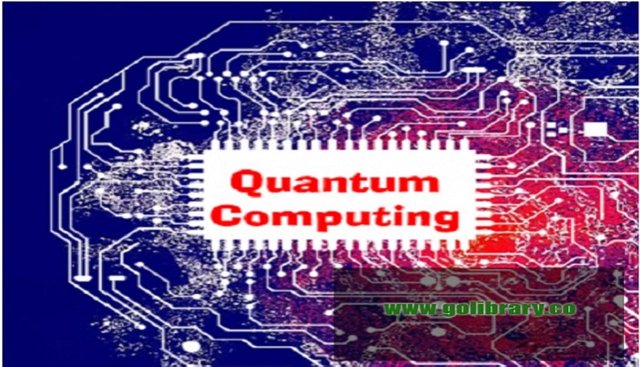What is Quantum Computing

Quantum Computing Introduction
Quantum computing is based on the principles of quantum physics. In physics, a quantum is the minimum amount of any physical entity involved in an interaction - Source Wikipedia.
Quantum computing has intrigued and fascinated us since decades and still remains elusive.While technology has advanced by leaps and bounds, quantum computing is still in its infancy. However, with the rate we are advancing scientifically, quantum computers necessarily gonna be commercially viable and will certainly replace classical computers of today, though it will take time.
Quantum computers make use of the principles of quantum mechanics (superposition and quantum entanglement - more on this later) to achieve the speed and efficiency which they are well known for. While classical computers use transistors as their building blocks, quantum computers are based on qubits which is a fundamental digital storage unit in quantum computers.
Quantum Computers versus classical computers
The classical computer equivalent of qubit is a bit which can either be 0 or 1 at a time unlike quantum computers wherein the qubit can be 0,1 or both at a time giving it additional processing capability and hence speed.
In classical computers a bit represents any of the 2 possible discrete voltage levels (HIGH = 1 or LOW = 0) flowing through a digital circuit which is called a flip flop which is a binary storage device made of transistors. It's the flip flop which stores binary data in classical computers. Below diagram represents these voltage levels.

In quantum computers, qubit represents the atomic unit of data which stores info and exists in superposition which can be 0 or 1 or both at the same time. A qubit can be electron, photon, ion or an atom and their respective control devices which work in tandem act as registers called qubit registers and quantum processors. Since the qubits can be in both states simultaneously, a quantum computer is light years ahead in terms of speed when compared to their traditional classical counterparts. It has faster processing capability than the fastest supercomputer we have today.
In a quantum computer, electron spin is used to represent the state of a qubit and the control devices like quantum dots, ion traps, optical traps etc. use electric fields to change the electron spin and hence control qubit states. These control devices are made of semiconducting materials. New advanced techniques of creating qubits using super conducting materials are being discussed and researched by Scientists and Engineers.
More on Superposition and quantum entanglement
Superposition
Quantum superposition says that much like waves two or more quantum states (for eg. electron spin) can be superposed which will result in another valid state which can be a mix of two states i.e. 01 (in simple binary terms). Thus a qubit can have 3 values like 0, 1, 01. More the number of qubits, the permutations will drastically increase in terms of number of states and hence more data can be stored and processed simultaneously. However, the superposed state remains valid only until we observe them using some observation technique. The moment we see the quantum particles, their wave function collapses and we will always find them to be either in 1 or 0 state only. This has been experimentally verified using Double slit experiment.
Quantum Entanglement
Entanglement in simple terms is a phenomenon in which quantum states of 2 or more objects or particles have to be described with respect to each other irrespective of the spatial difference between them. These states are intertwined for eg. if 2 particles are entangled and one spins down, the other should spin up and vice versa. Due to this principle, the measurement of state of one particle decides the state of another. This signifies an instantaneous information sharing mechanism which someone might perceive as faster than light transfer of information between quantum particles, however this is not the case. Quantum entanglement has applications in the emerging technologies of quantum computing and quantum cryptography, and has been used to realize quantum teleportationexperimentally as shown by Chinese scientists Last year.
Limitations of Today's Quantum Computers
While quantum computing is advancing , we still have not been able to build a full fledged general purpose quantum computer.The quantum computers today are more geared towards solving complex computing problems only like an ASIC chip does and they are 100 times slower on some other computing operations like gaming video streaming etc.
They are expensive and produce a lot of noise in the qubits which makes them more error prone by destroying the data stored in qubits.
They are not energy efficient and thus consume a lot of power and also are every expensive.
They are to be maintained under sub zero temperatures which again calls for huge maintenance costs.
Threats posed by quantum computers to cyber security and cryptography
If a quantum computer having sufficient number of qubits can run without succumbing to noise, it can use Shor's Algorithm to easily break public key encryption algorithms like RSA, DSS etc. This calls for more advanced cryptography techniques and algorithms. Thus, if quantum computers go mainstream, computer science fields like cryptography will need a drastic shift and advancement to be crack resistant to quantum computing.
IBM Q Experience
IBM has exposed a quantum computer on cloud here. It's a good platform for quantum computing enthusiasts to create and run programs that execute on quantum computer like the Shor's Algorithm which runs in Polynomial time on quantum computer but takes exponential time on classical computers.
Posted from my blog with SteemPress : http://www.golibrary.co/what-is-quantum-computing/